
By Rebecca Latson … on July 9th, 2019
In the December 2013 online edition of Discover Magazine, an article written by physicist and cosmologist Dr. Max Tegmark proposes that “everything in the universe is made of math.” I’m not a mathematician. I disliked math in college and ended up auditing calculus because I knew I would not get a passing grade. So, while most of Dr. Tegmark’s article sailed over my head, I did get the gist that there is geometry in nature, everywhere we look, even if we don’t necessarily recognize it as such, at the time. Now, that, I understand.
As a photographer, I look through my camera’s viewfinder and see natural and man-made mathematics in the form of geometry. My eyes are grabbed by circles, angles, lines, arcs, ellipses, rays, and spirals created by beaches, bridges, rivers, rock formations, trees, and other things I see in the landscapes surrounding me. I use that geometry to create scenic images filled with natural frames, leading lines, and orderly or abstract patterns. When you compose a pretty photo of a landscape in a national park, you probably don’t realize you may have chosen that scene based upon geometry. You just know there is something about that landscape catching your attention and worthy of a spot on your memory card.
What I want to do in this article is demonstrate how you can use this geometry in nature to improve your composition skills while producing your own beautiful national park imagery. I’m going to show you a few of my own photos, what geometry is in them, and how I composed the shot to highlight that geometry.
Delicate Arch in the winter, Arches National Park
The arcs of the arch exterior and interior are obvious geometry examples. In addition, notice the line/diagonal/angle created by the horizon and rock cliff behind the arch. It’s a rather busy scene kept clean by the clear winter atmosphere. I used the rule-of-thirds technique and placed Delicate Arch to the right side of the frame. The arch and red-rock foreground, in turn, create a small, natural frame highlighting the snow-capped La Sal Mountains.
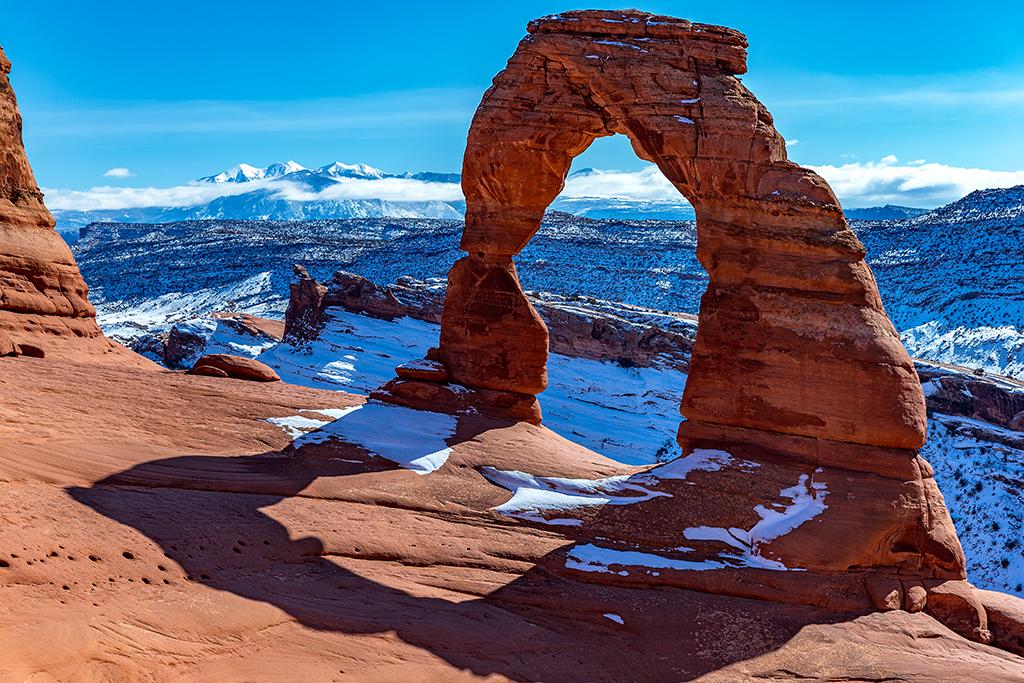
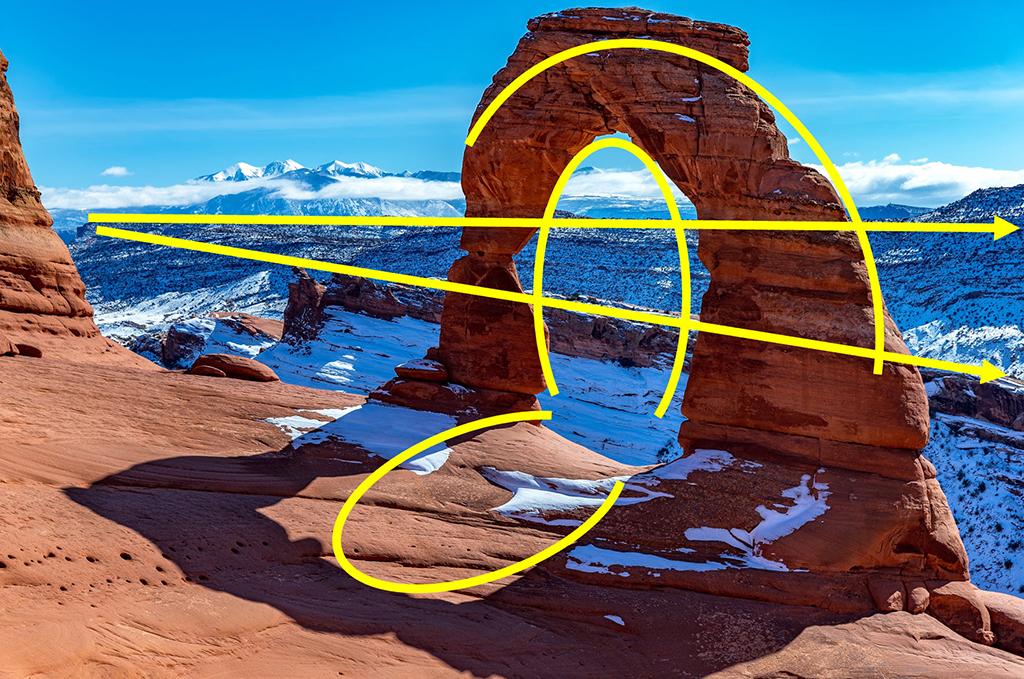
The bridge over Baring Creek, Glacier National Park
Here’s another composition filled with arcs: the bridge, the trail, and the creek. It’s the reason I captured this image in the first place. All these bowed leading lines invited me and my camera to walk beneath the bridge and continue along the trail to see what photographic adventure awaited. I used the rule-of-thirds technique again, with the geometry pointing toward that partial view of the trail in the lower left corner.
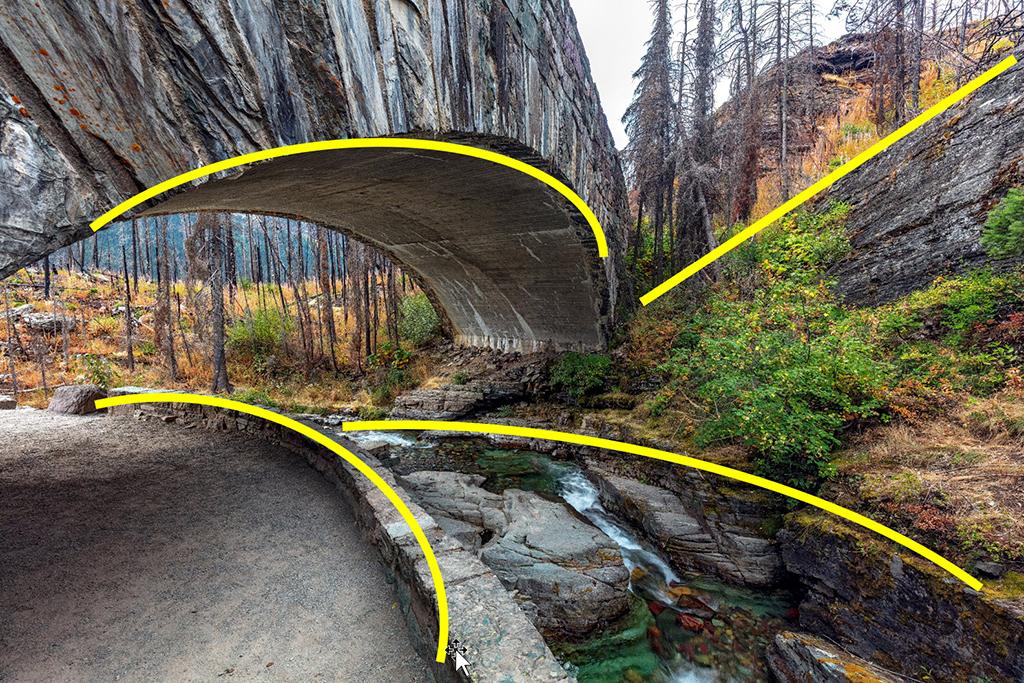
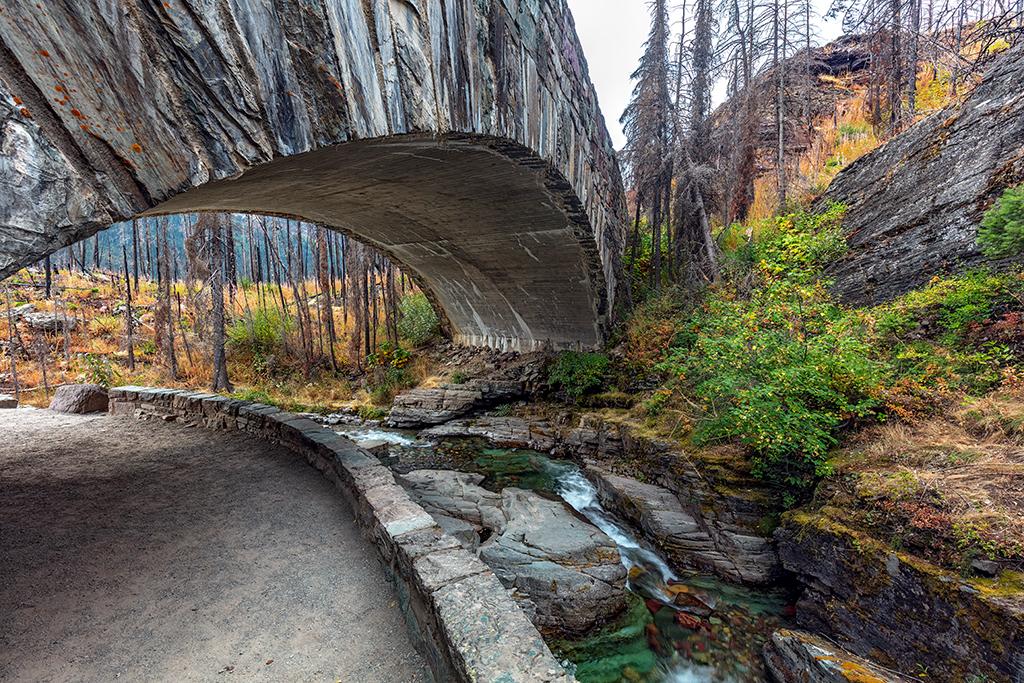
Tree lines and an arc of rushing water, Mount Rainier National Park
I’d photographed the other side of the stream across the road and was walking back to my car when my eyes chanced upon the opposite side where those pole-straight trees stood at attention over the arc of the whitewater stream. Although it was raining, I could see a soft light in the distance. The darker foreground and sides of this image created a sort of vignette to highlight that “inner glow.” I was also able to slow down the shutter speed to achieve a bit of the “silky water” effect, as well. By the way, overcast and otherwise dark days offer great lighting for the silky water technique, because you want to slow your camera’s shutter speed to begin with, in order to lighten up the area, and you don’t necessarily need to rely on either a neutral density (ND) or a circular polarizing (CPL) filter, if you don’t happen to have one in your camera pack. If you’ve never heard of either of these filters before, I wrote an article explaining their uses.
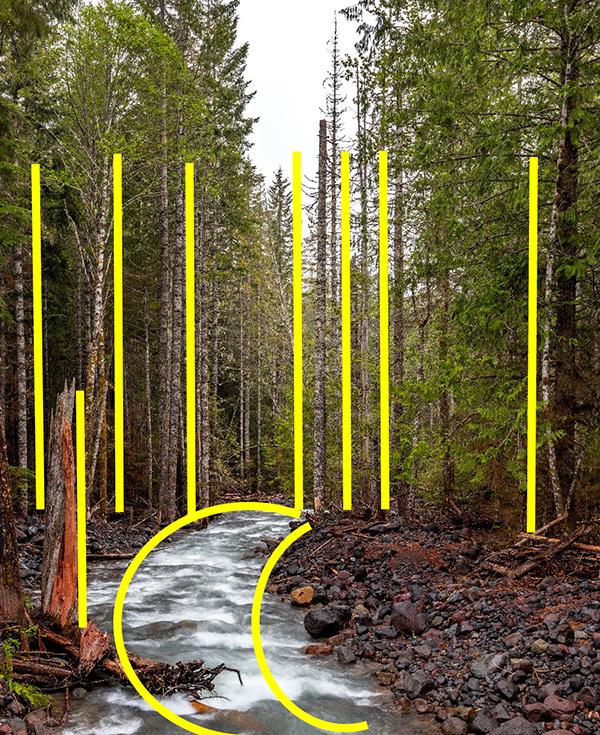
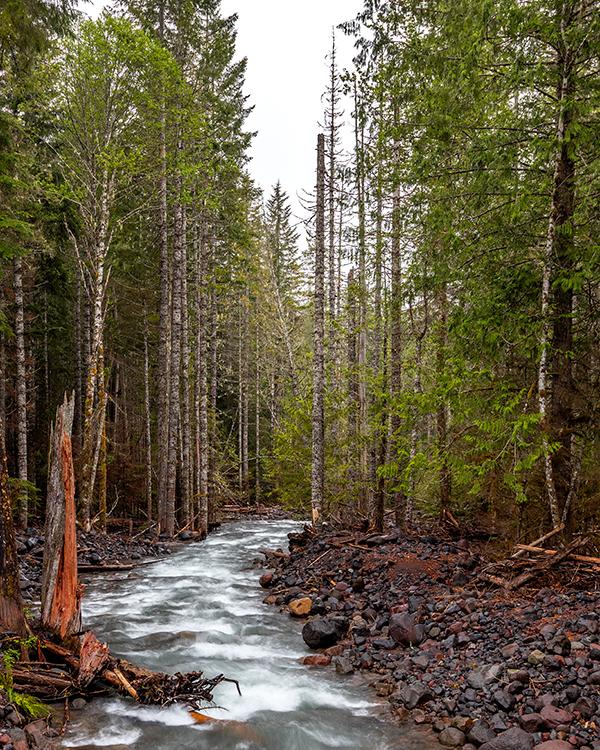
Arcs and lines of Kalaloch Beach 4, Olympic National Park
Standing at this Beach 4 overlook, it was easy to pick out the arcs of both beach and waves. I didn’t realize at the time how the trees growing along the bluff created a perpendicular to the horizon, but apparently my inner eye did because I remember thinking to myself how interesting it would be to place those trees to the side of the image for a little added viewer interest.
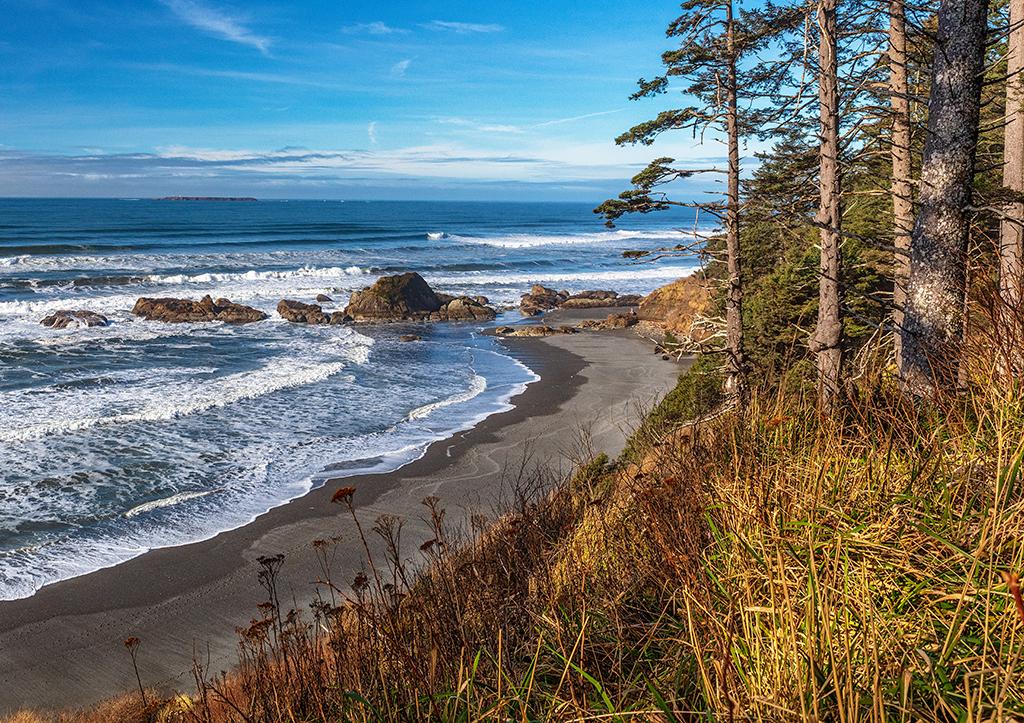
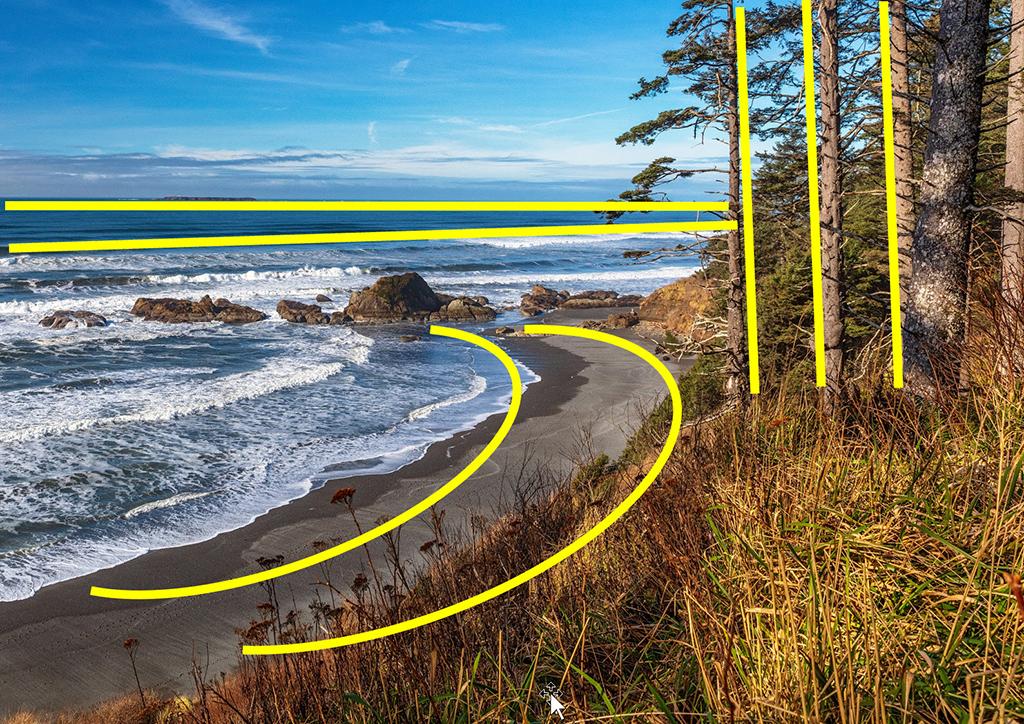
Bryce Amphitheater arc, Bryce Canyon National Park
This national park screams large-scale geometry, with its arc-shaped scoops of land. As I stood at the fenced-in view area at Sunrise Point, waiting for the sun to light up the hoodoos of Sunset Point, I also noticed the diagonal created by the three trees and included them in the composition. In retrospect, I wish I would have used a slightly wider angle to include more of the trees.
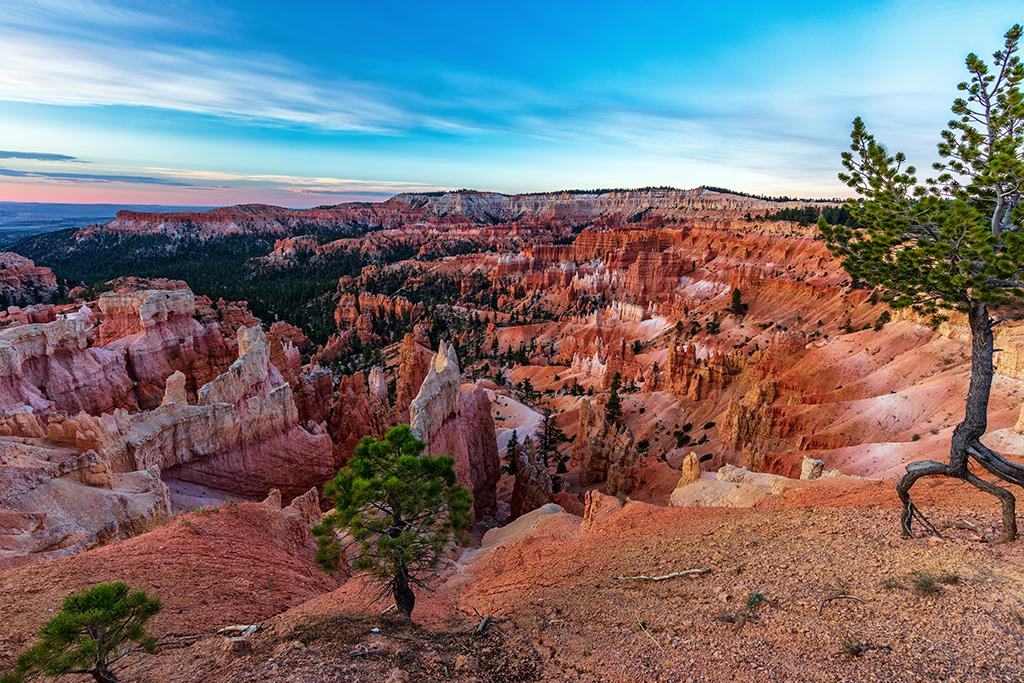
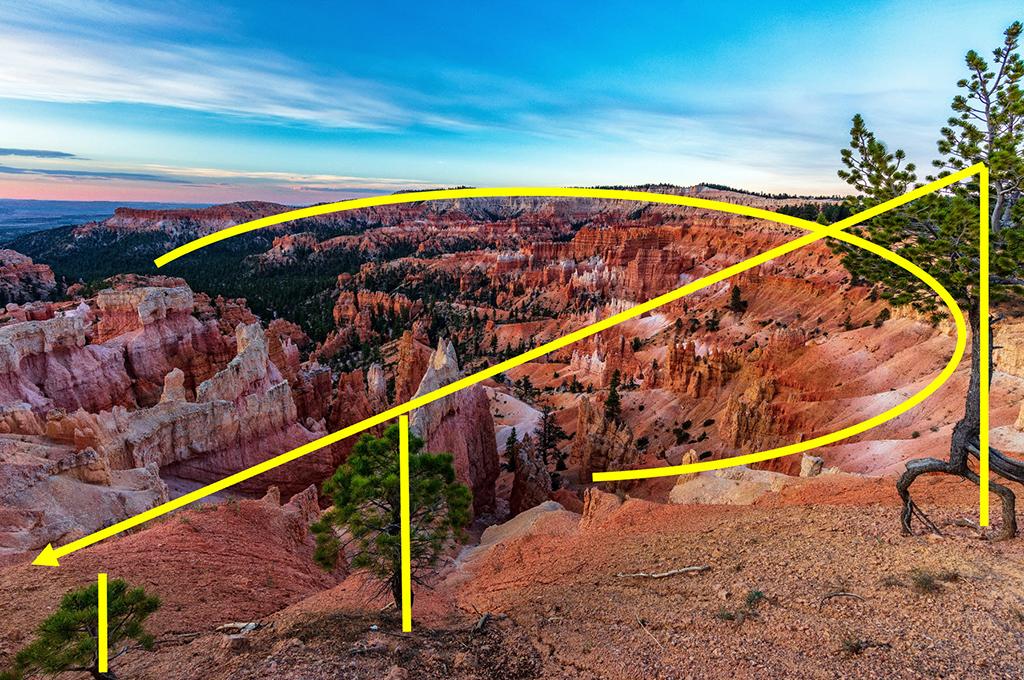
Did you notice I used the words “inner eye” a couple of times? Everything I’ve discussed has been pretty straightforward, but I want to take a short moment to talk about what I call “invisible leading line geometry,” which might not be quite as obvious. Look at the photo below of Christine Falls in Mount Rainier National Park. Where do your eyes fall first, then second, then third? Do they essentially follow the arrows, taking you from the close-up tree trunk on the left, to that tree on the right side of the rock wall and then finally to the falls itself, in the middle?
Or perhaps you see this in reverse order?
I’ll bet, subconsciously, your inner eye followed that invisible leading line path and you didn’t realize that’s what was happening when you clicked the shutter button. Sometimes, you need to follow that feeling you get when you look at a scene. While you may not know exactly why you like a particular landscape so much, it just might be that your inner eye has detected a bit of interesting geometry that will reveal itself to you during the editing stage of your photography
Go back and look at previous national park shots you’ve captured. If you see the natural geometry in your compositions, that means your powers of observation are improving. You’ve actually seen and photographed the mathematics of nature.
